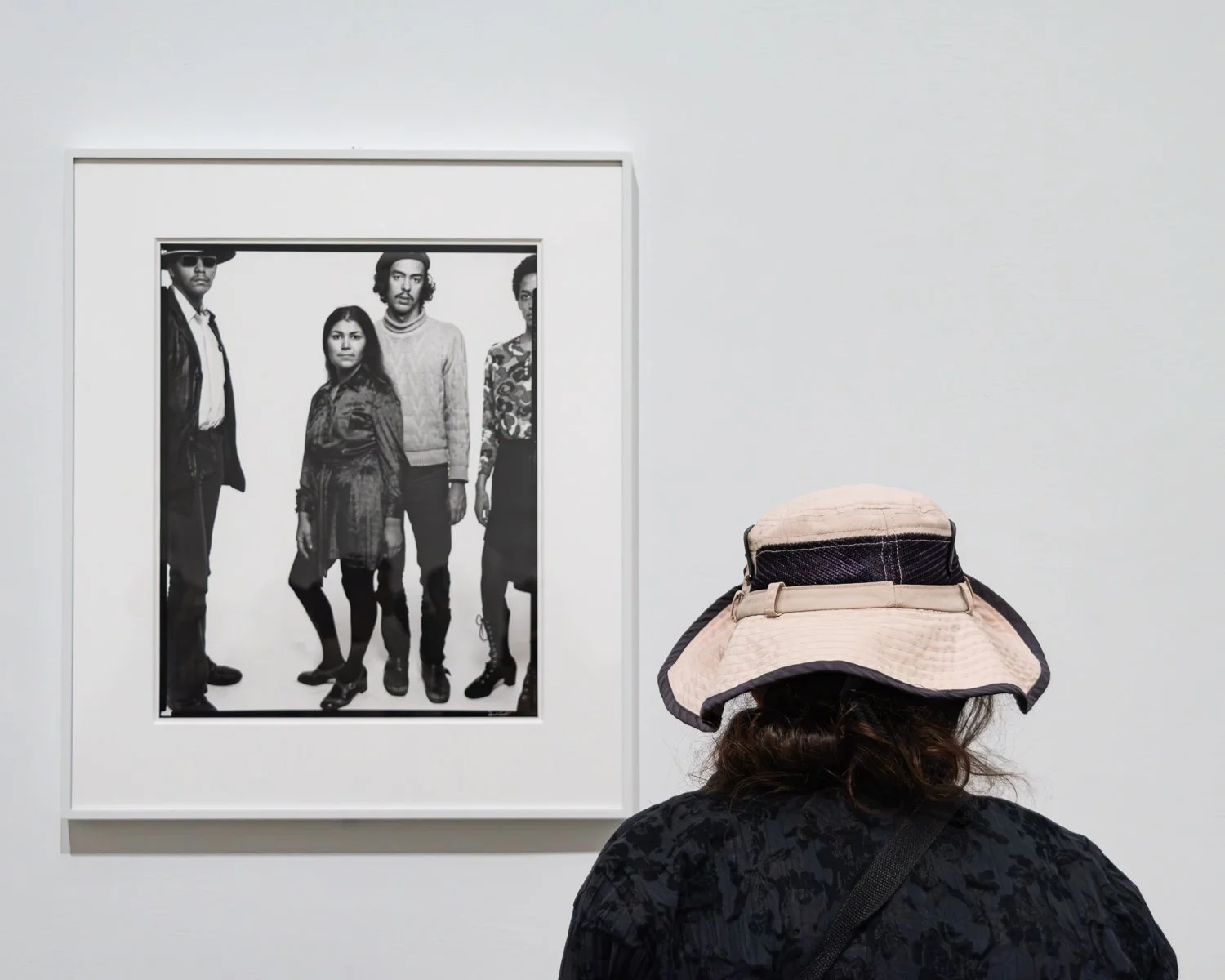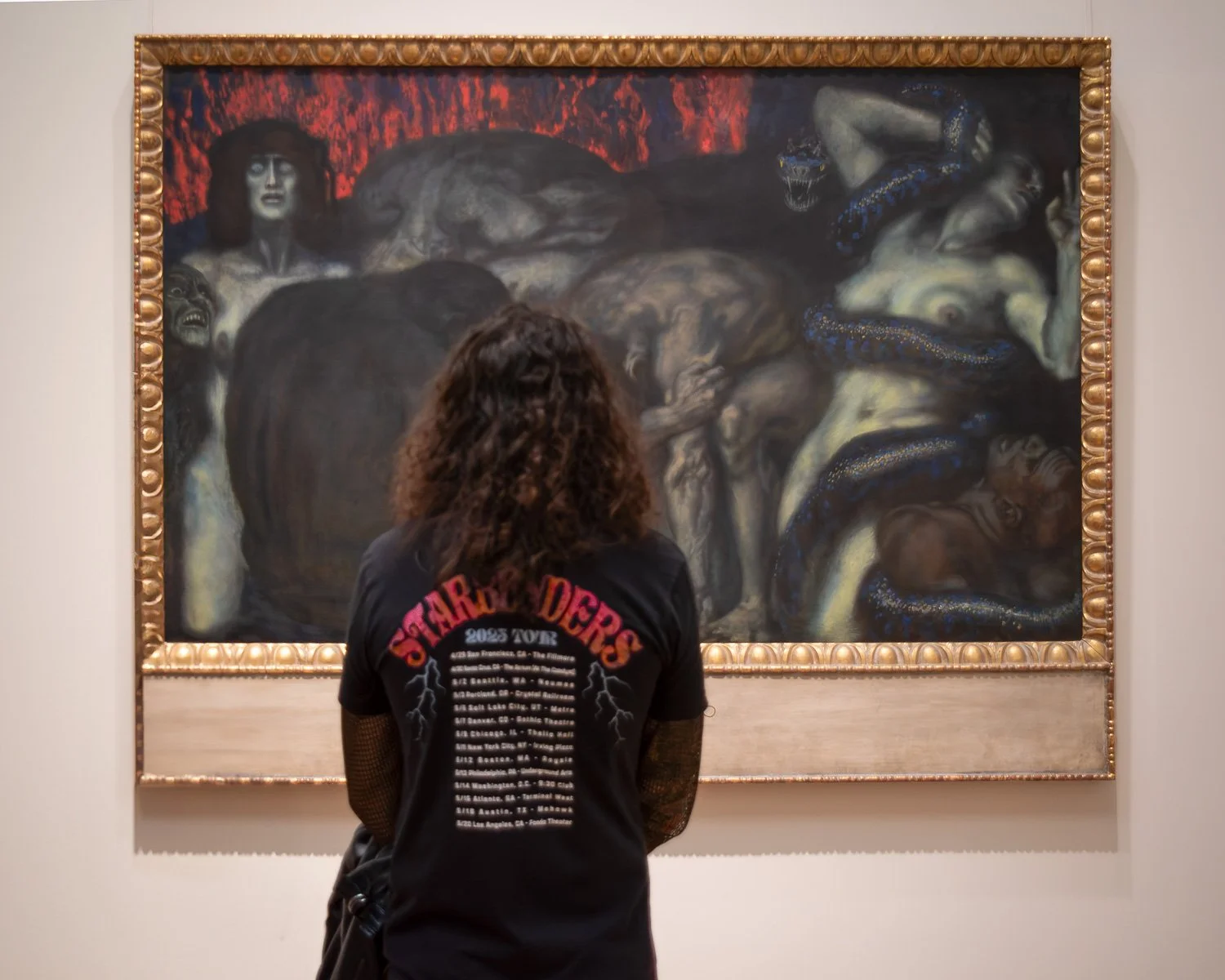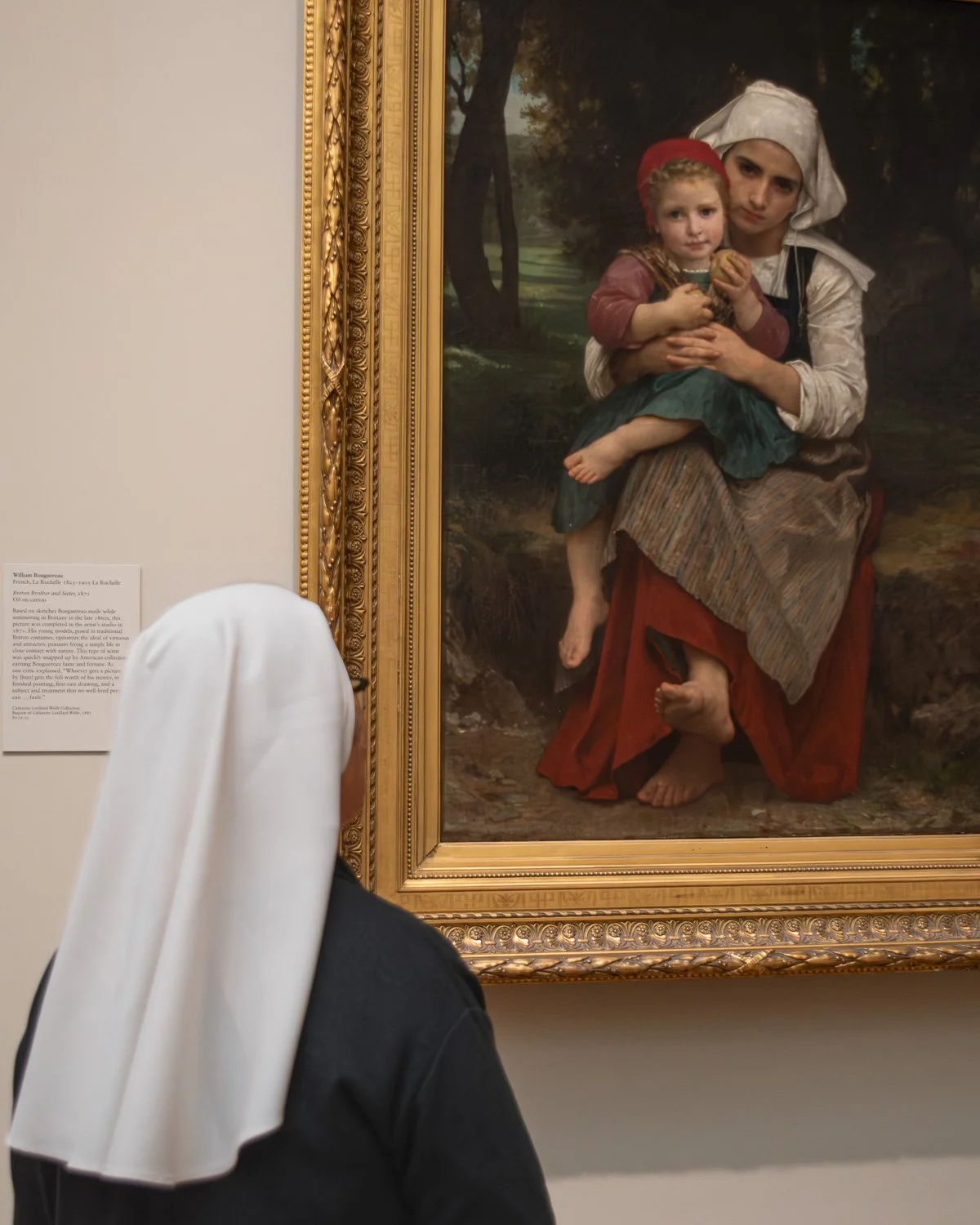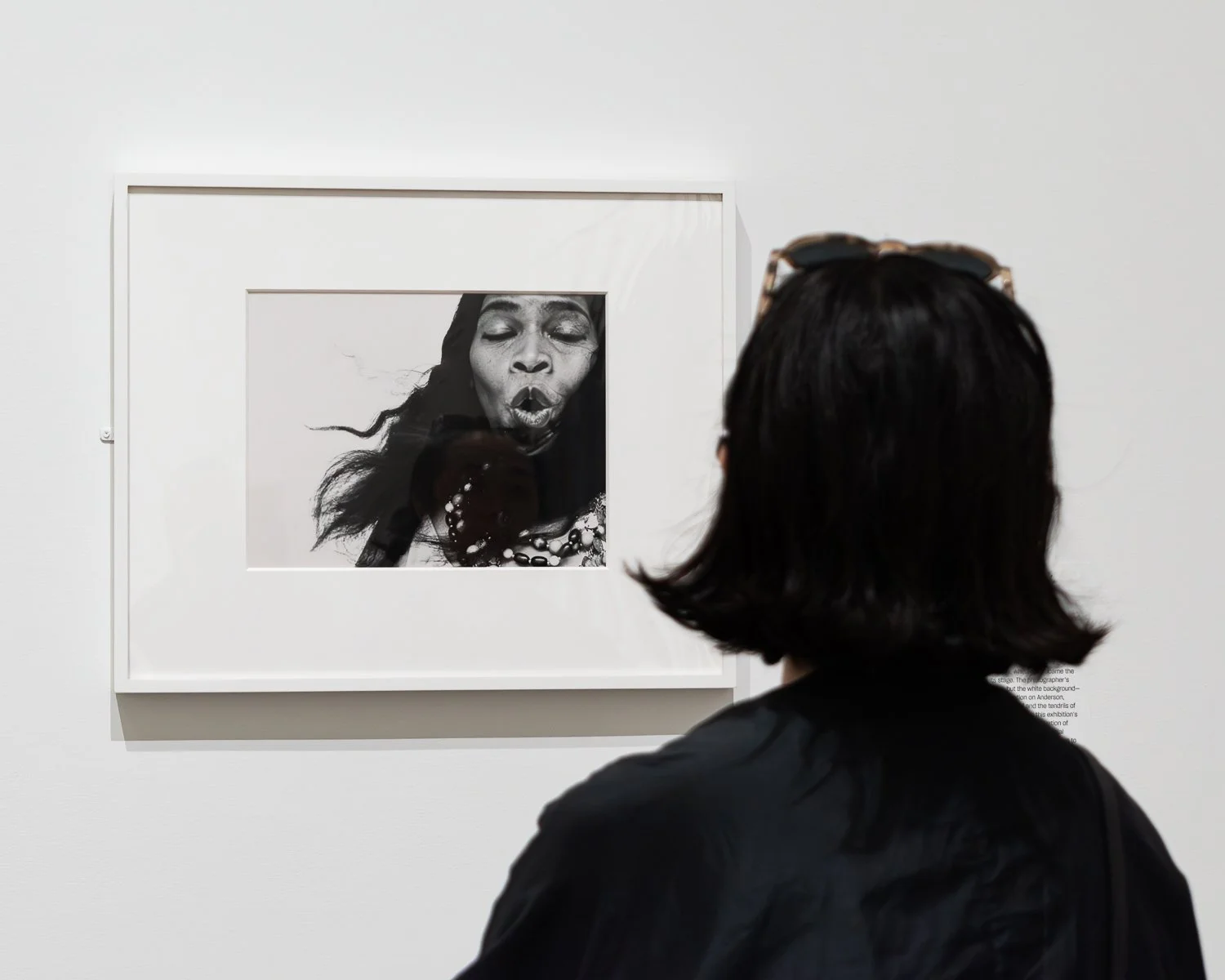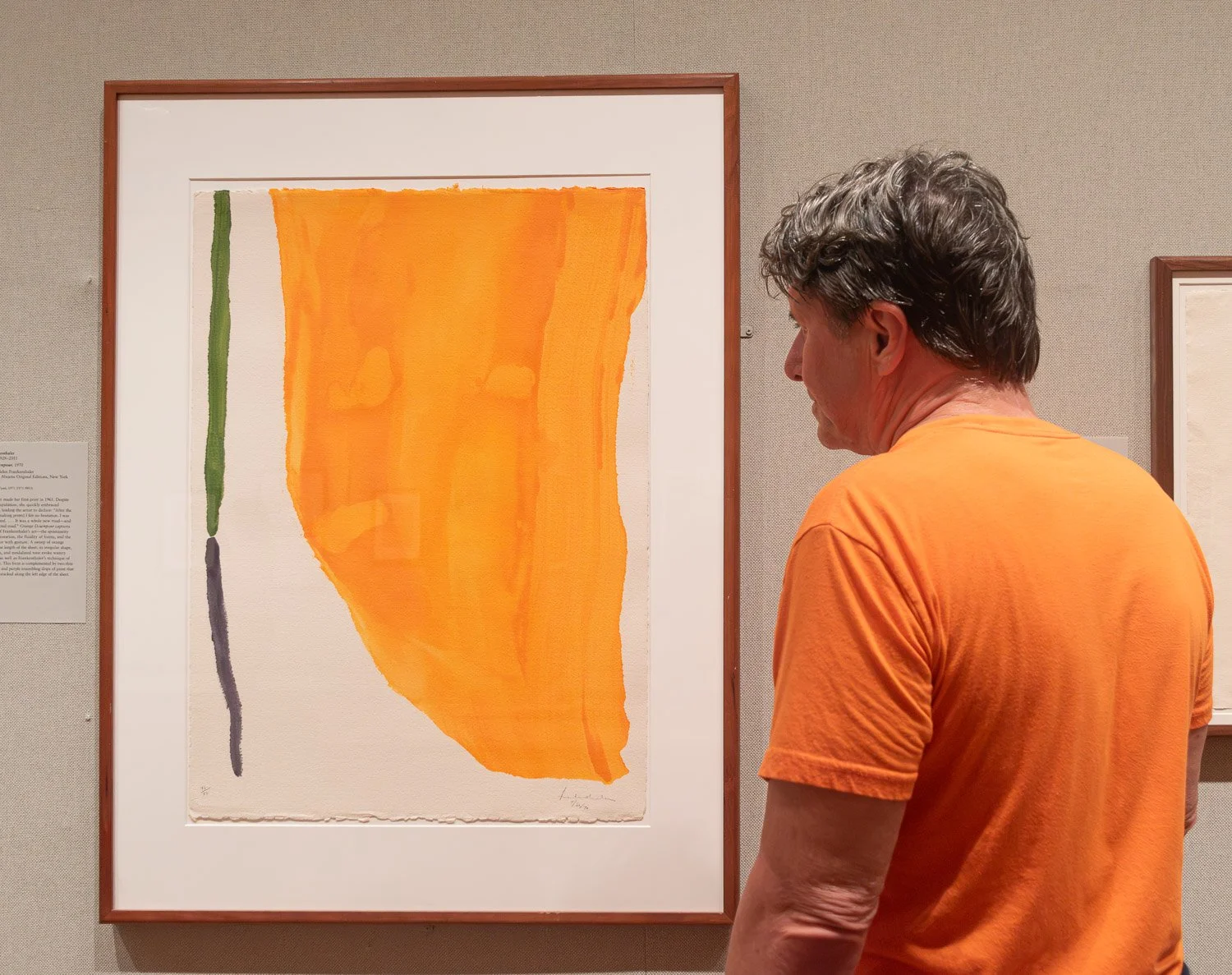first looks - art connections
In my previous post, I discussed capturing impressionistic shots of visitors at the Metropolitan Museum of Art in New York City. However, drawing inspiration from Paul Harrison (view his blog entry here) my initial goal for photography at the museum was to capture interactions between visitors and the art on display.
These interactions, much like Paul's work, are driven by commonalities between patrons and artwork, whether that might be through their attire, gestures, or the connections formed through eye contact and expressions.
To succeed, I needed to be prepared through planning and patience. I carefully surveyed the artwork, looking for opportunities such as color patterns, gestures, and gazes.
Observing visitors as they moved through the galleries was the next step, identifying potential matches. For instance, I'd spot someone wearing a colored dress that echoed the colors in a particular painting.
The rest relied largely on chance. I hoped that the visitors of interest would engage with a matched painting in a way worthy of capture. This was both challenging and frustrating at times, with ideal opportunities slipping away for various reasons. I must admit that in a couple of instances, I couldn't resist seeking the cooperation of visitors when the opportunity seemed too good to pass up.
This process worked well for matching elements between artwork and visitors. However, connecting gestures and expressions required patience and keen observation, proving to be both time-consuming and frustrating.
It may come as no surprise that a visitor dressed in Goth attire would be drawn to such a macabre piece of art. Fortunately for me, the color scheme of the clothing somewhat aligns with that of the artwork.
Challenges
There were several notable challenges:
Light Levels: Despite the galleries appearing well-lit, they were quite dark for photography. I often had to raise the ISO significantly to achieve a barely adequate shutter speed and depth of field. For example, many shots were taken with an ISO in the range of 2000-4000, giving me a shutter speed of around 1/60 sec at f/5.6.
I now feel that speed and depth of field need to take priority at the expense of high ISO. If needed modern applications such as Lightroom can effectively reduce image noise to an acceptable level.
Reliance on Chance: The final results depended on artwork presenting opportunities, visitors resonating with these pieces through their attire or gestures, and the two elements aligning in a photo-worthy way. Embracing this element of chance was necessary to prevent frustration.
Crowds: I visited the museum on two separate occasions. During the first visit, I arrived midday and enjoyed reasonable success until the galleries became overly crowded, making it hard to isolate individuals interacting with the art. On the second visit, I planned to go early in the morning to avoid the crowds, but it had the opposite effect. Given the Met's vast size, it took quite a while for visitors to filter through to the galleries of choice.
Below if a gallery of my favorite results. Taking into account the limited time I spent at the museum I am quite pleased with the outcomes and enjoyed my time at the museum.
I’d love to hear what others think. Do you have a favorite, have you tried something similar yourself?
Please open images to view full size and in intended format

